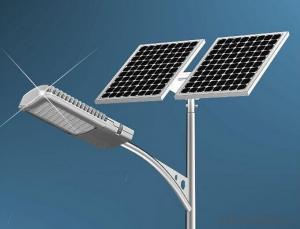290W CNBM Solar Polycrystalline Series III (280W—295W)
- Loading Port:
- China main port
- Payment Terms:
- TT OR LC
- Min Order Qty:
- 10000 watt
- Supply Capability:
- 500000 watt/month
OKorder Service Pledge
OKorder Financial Service
You Might Also Like
Item specifice
CNBM Solar Polycrystalline Series III (280W—295W)
Characteristics
Max Power Voltage Vmp(V) | 36.6 | 36.9 | 37.2 | 37.5 | ||
Max Power Current Imp(A) | 7.66 | 7.73 | 7.8 | 7.87 | ||
Open Circuit Voltage Voc(V) | 44.2 | 44.6 | 45.1 | 45.4 | ||
Short Circuit Current Isc(A) | 8.26 | 8.32 | 8.41 | 8 | ||
Max Power Pm(W) | 280 | 285 | 290 | 295 | ||
Temperature Coefficient of Cells
NOCT | 45℃±2℃ | |
Temperature Coefficients of Isc (%/℃) | - 0.0492 | |
Temperature Coefficients of Voc (%/℃) | – 0.3374 | |
Temperature Coefficients of Pmp (%/℃) | –0.4677 | |
Mechanical Data
Dimension | 1638 x 982 x 40 mm | |
Weight | 19.5kg | |
No. of Cells and Connections | 60 (6 x 10) | |
Tolerance | 0~+5W | |
Cell Monocrystalline Cell | 156 x 156 mm | |
Packing | 700 Pcs/40ft(H) Container | |
Limits
Operating Temperature | –40 °C to +85°C | |
Storage Temperature | –40 °C to +85°C | |
Max System Voltage | 1000VDC(IEC) / 600VDC(UL) | |
IV Curve

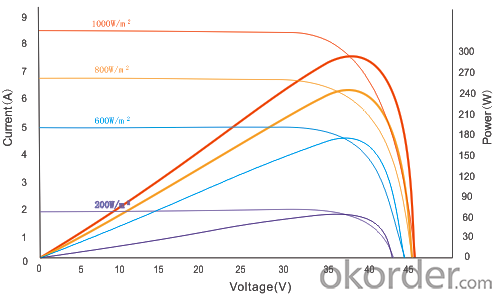
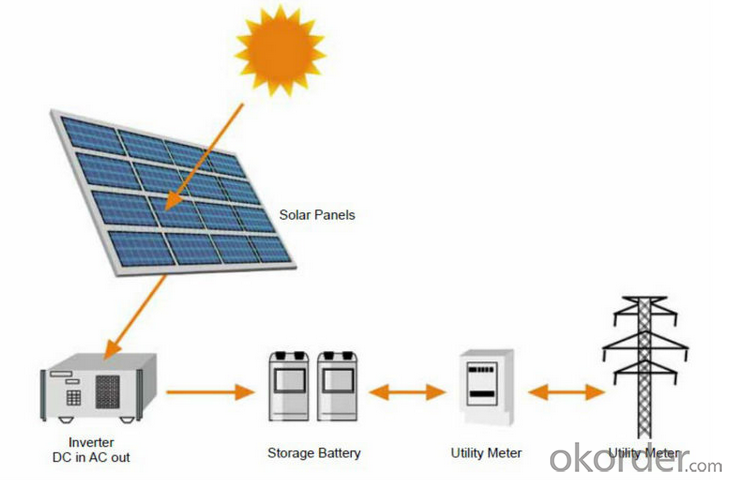
Image
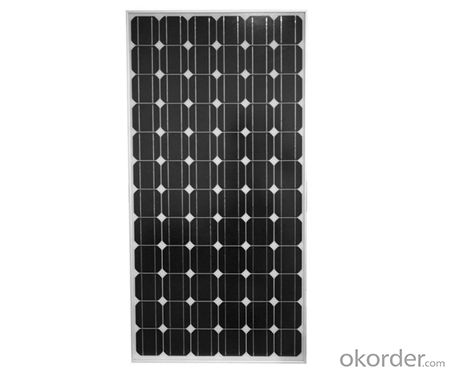
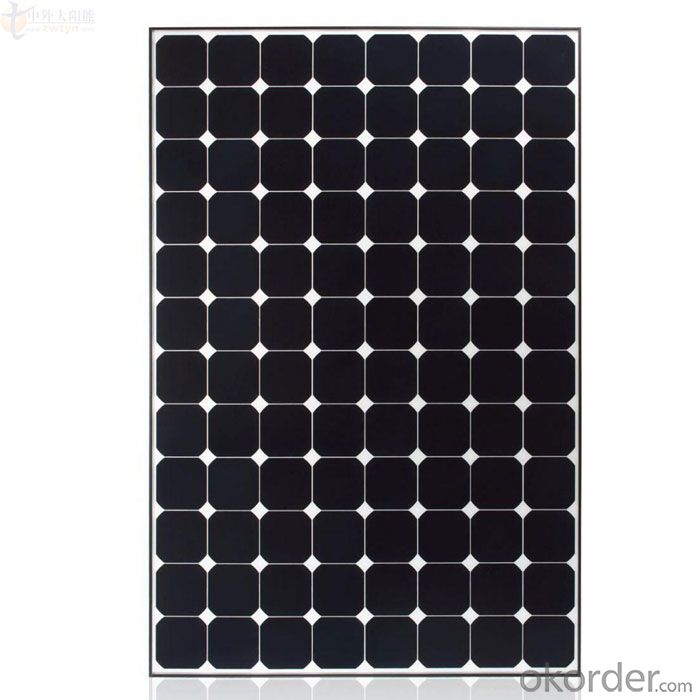
Guarantees
Products Guarantee 12 yrs free from defects in materials and workmanship
Performance Guarantee No less than 90% within 10yrs and no less than 80% within 25yrs
Certificates TUV (IEC61215&IEC61730), VDE(IEC61215&IEC61730), UL, CE
FAQ
1. Q: Do you have your own factory?
A: Yes, we have. Our factory located in Jiangsu province.
2. Q: How can I visit your factory?
A: Before you take off from your country, please let us know. We will show you the way, or arrange time to pick you up if possible.
3. Q: Do you provide free sample?
A: Usually we do not offer free sample
4. Q: Could you print our company LOGO on the nameplate and package?
A: Yes, we can do that.
- Q:Can solar panels be used to power an entire office building?
- Yes, solar panels can be used to power an entire office building. By installing a sufficient number of solar panels on the roof or surrounding areas, an office building can generate enough electricity to meet its energy needs. Additionally, by integrating battery storage systems, excess solar energy can be stored and used during non-sunlight hours, ensuring continuous power supply.
- Q:I heard that solar energy has a lot of advantages but are there any drawbacks in using the solar panels?
- The largest drawback is the upfront investment you have to make for solar panels. There are some programs that allow you to finance the panels through your property assessment called PACE and leasing programs that can alleviate the large upfront cash outlay. Solar Panels have a lifespan of 30+ years. Since there are no mechanical parts, there is very little maintenance required. After 0-5 years, you will have to replace the inverter which converts the energy from DC to AC. This is a small cost in respect to the whole installation. The panels clean themselves well with just normal rain. With all the great federal and state incentives, the payback on solar is at it's all-time best. In Massachusetts, for example, the payback right now is 5 or 6 years -- then you would be making money for the next 25+. Another big potential drawback is that you must have the right site for solar to begin with. I'm a solar installer and I can tell you a lot of houses might not be right for solar. The best orientation is south, while southeast and southwest can work as well. The space must be unshaded and it would be best if it had few obstructions like chimneys, etc.
- Q:i want to instal solar ligth in my garden
- There are MANY garden lights with built in batteries and solar panels that you just need to stick in the ground. There are also self contained units that are wall mountable. THAT way there is no need to run wiring, use battery stacks, etc. and will also probably be less expensive overall.
- Q:Got a quote for about $K today for solar panels to save me about $00 a month on my electric bill. I was just wondering if anyone had successfully bought and installed their own and how it worked for you?
- i have always been interested in it but the storage (batteries) and power grid tie in (to get paid for excess) technicalities made me shy away. since your getting it installed im sure labor is a huge part of that -OKorder has tons of the equipment. I think wind may be a good home renewable source depending on where you live (cheaper than solar if you got the wind and space) I would doubly check any goverment offerings - I know they used to and maybe still do offer sizable credits if you are within the bureacratic standards so make sure the installers work with you on that. good luck -its new - and going to be a hassle to get right but the world needs more like you. willing to pay more now for a better tommorow (and not just $ wise) you should come out ahead as interest rates and market provides little value on that cash and saving any equipment falure you sound good. does the price include the batteries for all your produce kwh's? panels and labor aside batteries are the next big one
- Q:Can solar panels be installed in areas with high seismic activity?
- Yes, solar panels can be installed in areas with high seismic activity. However, special considerations need to be taken into account during the installation process to ensure their stability and durability. Reinforced mounting systems and appropriate anchoring methods can be utilized to enhance the resistance of solar panels to seismic events. Additionally, regular inspections and maintenance should be conducted to identify and address any potential issues that may arise due to seismic activity.
- Q:Please, I want a good definition. :DD
- Solar panel is a battery of solar cells. Solar cell is a device which uses the sun's rays to produce electricity by the photovoltaic effect. The photovoltaic effect involves the creation of a voltage (or a corresponding electric current) in a material upon exposure to electromagnetic radiation. It utilizes the generation of a voltage when radiant energy falls on the boundary between dissimilar substances (as two different semiconductors).
- Q:Can solar panels be installed on boats or RVs?
- Yes, solar panels can be installed on boats or RVs. In fact, it is quite common to see solar panels being used as a source of renewable energy in these mobile settings. Solar panels can provide a reliable and sustainable power solution for charging batteries and running various electrical appliances on boats and RVs.
- Q:What is the average annual energy output of solar panels that can be installed on the home?
- The energy output is highly dependent on the location. For a specific area, you can look up the equivalent peak sun hours per day here: rredc.nrel /solar/old_data/nsr... Let's say that it says the peak sun is 5 hours / day in your location. Then a typical 200-watt panel would have 5 x 200 = 000 wH = .0 kWh per day, or 365 kWh annually. The tables above already take into account average cloudy days, and seasons. A typical size installation would have perhaps 6 of these panels, but it could be less, or much more.
- Q:How do solar panels affect the energy independence of a building?
- Solar panels can greatly enhance the energy independence of a building by converting sunlight into electricity. By generating their own clean and renewable energy, buildings with solar panels can reduce or even eliminate their dependence on traditional energy sources like fossil fuels or the grid. This not only reduces the carbon footprint but also provides a sustainable and reliable source of power, ultimately granting greater energy independence to the building.
- Q:Is it good? ( solar energy)
- It depends mainly on where you live - both politically and geographically. It's very worthwhile if you live in the Southern hemisphere and your house faces north. The same holds true if you live in the Northern hemisphere in a south-facing dwelling. If your government gives a generous rebate towards your purchase of the panels (as the Australian one does) then ,yes, it is worthwhile as you can make your money back in only a few years. Of course if your motivation is more an ecologic than economic one then go ahead and do it.
1. Manufacturer Overview |
|
|---|---|
| Location | |
| Year Established | |
| Annual Output Value | |
| Main Markets | |
| Company Certifications | |
2. Manufacturer Certificates |
|
|---|---|
| a) Certification Name | |
| Range | |
| Reference | |
| Validity Period | |
3. Manufacturer Capability |
|
|---|---|
| a)Trade Capacity | |
| Nearest Port | |
| Export Percentage | |
| No.of Employees in Trade Department | |
| Language Spoken: | |
| b)Factory Information | |
| Factory Size: | |
| No. of Production Lines | |
| Contract Manufacturing | |
| Product Price Range | |
Send your message to us
290W CNBM Solar Polycrystalline Series III (280W—295W)
- Loading Port:
- China main port
- Payment Terms:
- TT OR LC
- Min Order Qty:
- 10000 watt
- Supply Capability:
- 500000 watt/month
OKorder Service Pledge
OKorder Financial Service
Similar products
New products
Hot products
Related keywords
